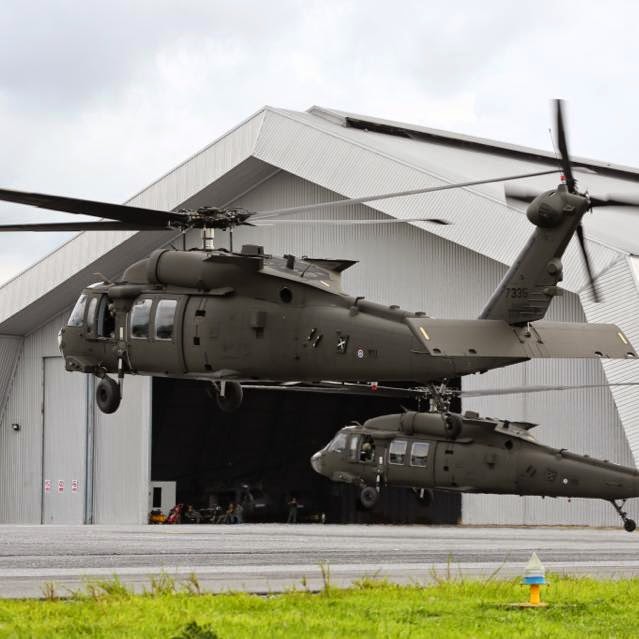UH 60 Helicopter Upkeep: A Comprehensive Guide for Pilots
UH 60 Helicopter Upkeep: A Comprehensive Guide for Pilots
Blog Article
Comprehending the Mechanics and Design Behind Uh 60 Helicopters
The UH-60 helicopter, commonly recognized as the Black Hawk, stands as a peak of contemporary rotorcraft technology, symbolizing a blend of robust design and elaborate auto mechanics. As we peel back the layers of the UH-60's design, a globe of complex systems and meticulous engineering comes to light.
Background of UH-60 Helicopters
The background of UH-60 helicopters traces back to the late 1970s when the USA Military looked for a sophisticated and flexible energy helicopter to replace its aging fleet. In reaction to this demand, the Sikorsky Aircraft Corporation created the UH-60 Black Hawk helicopter. Presented in 1979, the UH-60 promptly ended up being a staple in military operations because of its impressive capabilities.
The UH-60 was designed to master a variety of goals, consisting of army transportation, clinical emptying, electronic warfare, and unique procedures. Its capacity to adapt to different roles made it a valuable possession to the U.S. uh 60. Army and other military forces around the globe
Over the years, the UH-60 platform has actually undergone numerous upgrades and variants to improve its efficiency and keep speed with progressing objective requirements. These helicopters have seen extensive service in conflicts such as the Gulf Battle, Afghanistan, and Iraq, showcasing their integrity and adaptability in diverse functional atmospheres. The UH-60's rich history is a testimony to its long-lasting heritage as a top utility helicopter.

Engine and Power Equipments
Using innovative propulsion innovation, UH-60 helicopters are geared up with innovative engine and power systems to ensure optimum performance and reliability in a variety of functional circumstances. The UH-60, typically referred to as the Black Hawk, is powered by 2 General Electric T700-GE-701D engines, each efficient in supplying up to 1,940 shaft horsepower. These turboshaft engines give the required thrust for the helicopter to lug out its goals effectively, including troop transport, clinical evacuation, and fight support.

Rotor System and The Rules Of Aerodynamics
Exactly how do the rotor system and aerodynamics of UH-60 helicopters add to their functional effectiveness and trip capabilities? The blades system of the UH-60 helicopter plays an essential function in offering lift and propulsion. The UH-60 includes a four-bladed, fully articulated rotor system that permits for high ability to move and stability during flight. This design makes it possible for the helicopter to perform a large array of objectives, from transportation and medical evacuation to battle procedures.
The rules of aerodynamics also play a key duty in the efficiency of UH-60 helicopters. The streamlined fuselage and rotor blade design decrease drag, permitting the helicopter to achieve greater image source rates and far better gas performance. The wind resistant design of the UH-60 additionally adds to its ability to operate in diverse environmental problems, consisting of high elevations and hot temperatures.
Avionics and Flight Control Equipment

In its intricate sychronisation with the rotor system and aerodynamics of UH-60 helicopters, the avionics and trip control systems form a critical network of technologies forming the airplane's operational capabilities. Avionics include the digital systems used for interaction, navigating, and checking different airplane features. In the UH-60, these systems include digital screens, interaction radios, GPS navigating, weather radar, and auto-pilot systems. These avionics systems give crucial information to the pilots, enhancing situational awareness and making certain effective and risk-free operation of the helicopter.
The flight control systems of the UH-60 are liable for equating the pilot's inputs into the ideal changes to the blades system, ensuring secure flight and maneuverability. These systems contain hydraulic actuators, servos, and computer systems that interact to control the main and tail blades, as well as various other trip control surface areas. By specifically taking care of the helicopter's trip dynamics, these systems allow pilots to do a wide variety of objectives, from transportation and search-and-rescue to combat operations, with precision and confidence.
Function and Applications in Air Travel
Avionics systems in UH-60 helicopters incorporate a range of electronic systems that help in navigation, communication, monitoring, and managing numerous aircraft features. These systems consist of electronic display screens, auto-pilot systems, interaction radios, General practitioner navigating devices, and climate radar. Furthermore, these systems incorporate security attributes such as auto-pilot settings, surface awareness warning systems, and stability augmentation systems to improve the total safety and operational capabilities of the UH-60 helicopters in different goals, consisting of army transport, clinical emptying, search and rescue, and airborne firefighting.
Verdict
In my blog conclusion, the UH-60 helicopter is a flexible airplane with a rich history and progressed design. Its engine and power systems, blades system, the rules of aerodynamics, avionics, and trip control systems all work together to make it a effective and trustworthy maker.
In its complex sychronisation with the blades system and aerodynamics of UH-60 helicopters, the avionics and trip control systems form a crucial network of Our site technologies forming the airplane's functional capacities.The trip control systems of the UH-60 are responsible for translating the pilot's inputs right into the appropriate changes to the blades system, guaranteeing secure flight and maneuverability. Avionics systems in UH-60 helicopters encompass an array of electronic systems that aid in navigating, interaction, surveillance, and regulating numerous aircraft functions. Additionally, these systems integrate safety and security features such as auto-pilot settings, terrain recognition alerting systems, and stability augmentation systems to improve the overall security and operational capabilities of the UH-60 helicopters in numerous goals, including troop transportation, clinical emptying, search and rescue, and airborne firefighting.
Its engine and power systems, blades system, aerodynamics, avionics, and flight control systems all work with each other to make it a trustworthy and reliable equipment.
Report this page